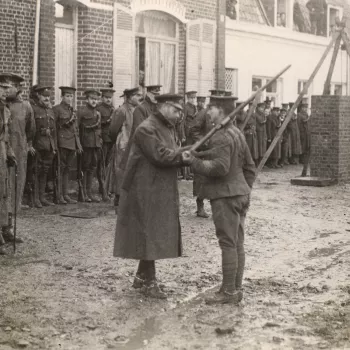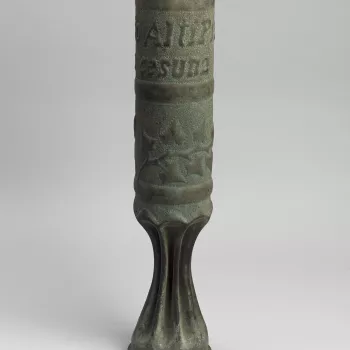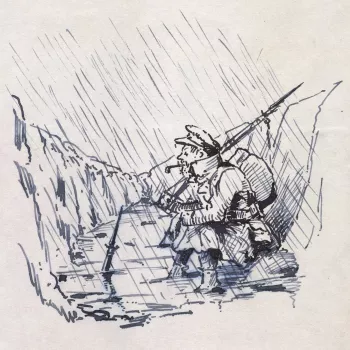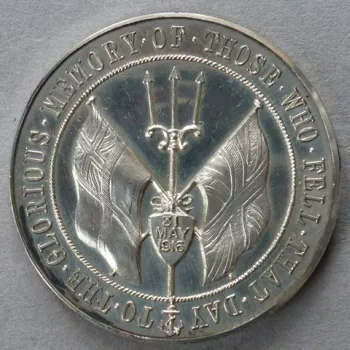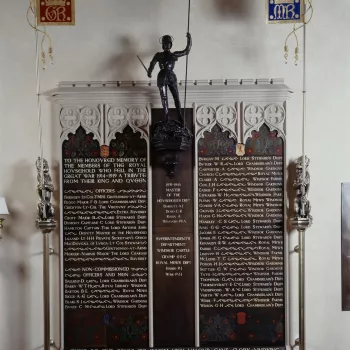King George V's War Museum
A collection displayed at Windsor Castle following the First World War
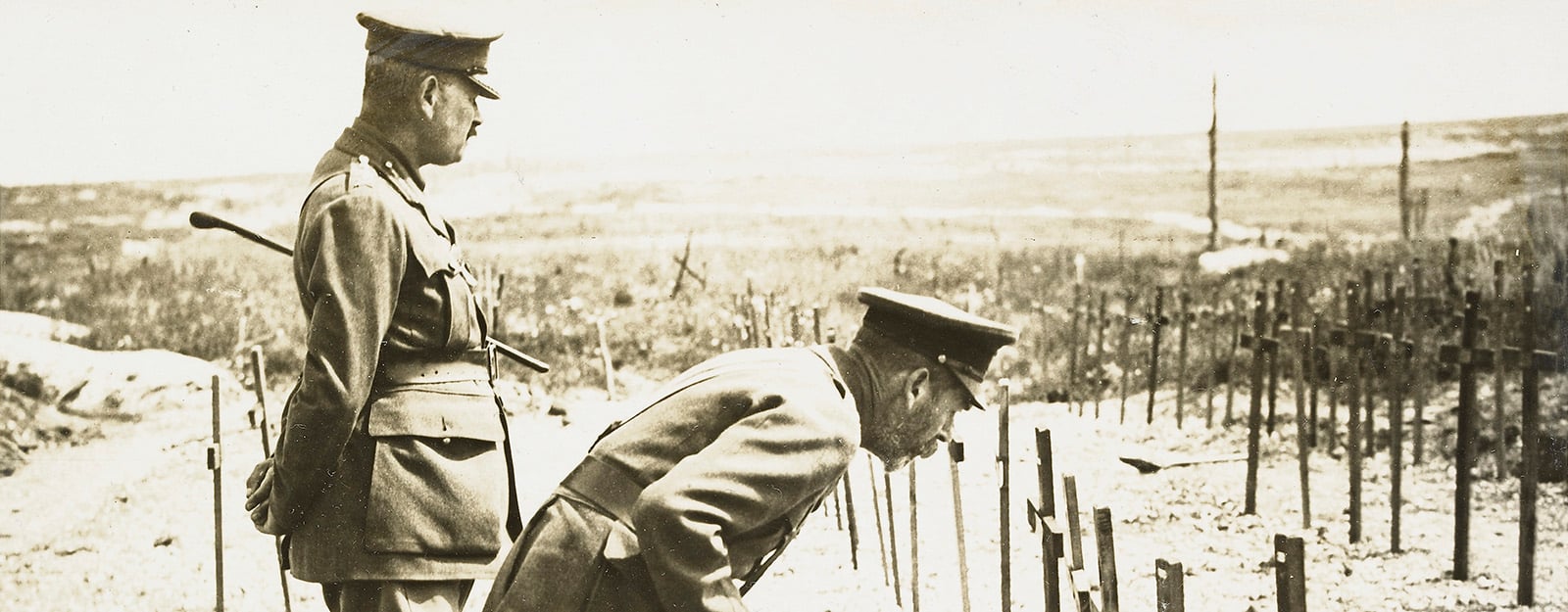
The First World War began in 1914 as a small conflict in southeast Europe but ended in 1918 as a war between European empires. Fighting was on a global scale never seen before. Several million people were killed and more than twice that were seriously wounded. New technologies of warfare including the tank, aircraft and submarine led to its designation as 'total war'. Both in Great Britain and abroad, all energy was directed towards the war effort.
Exhibitions about munitions and the technologies of modern warfare were displayed in museums across Great Britain; these were educational as well as propagandist, highlighting the way war was fought whilst implying a pervasive heroism. As the war progressed, the exhibitions began to function more as memorials. Soldiers were asked to send war trophies and personal effects while civilians contributed objects that illustrated their own experiences. These ideas of wartime collecting culminated in the founding of the Imperial War Museum in 1917.
King George V was Head of the Armed Forces of Great Britain, her dominions including Canada, Australia, New Zealand, and the Irish Free State, and her colonies. He recognised the significance of living through the Great War and collected military ephemera during this time. Many objects in the King's collection were also sent to him by individuals aware of his interest; in some cases these had a personal significance to the King. Other objects were collected by King George V or Queen Mary themselves during visits to the Western Front; the first time a monarch had visited a theatre of war in over a century. After the war these objects were displayed in the King's own War Museum at Windsor Castle. The Museum was situated in Brunswick Tower, in a space which had been a kitchen, and was opened to interested parties by the Royal Librarian. Each object in the War Museum was accompanied by a handwritten label. Sir John W. Fortescue, the Royal Librarian who assisted the King with the Museum, recalled the extension of his duties following the war in his autobiography:
Lastly, with the close of the war came a return of my old duties of arranging and displaying, this time in the matter of a war-museum. Throughout the four years of hostilities objects of various kinds had been sent to the King from the various theatres of operations both at sea and ashore - a German colour, the point of a huge German shell which had struck H.M.S. Lion, some small fittings from a German submarine, and the like. These had increased and multiplied until it became imperative to stow them somewhere...
Sir John Fortescue
The Museum was disbanded in 1936 at the accession of King Edward VIII, and many of the objects sent on long term loan to the new Imperial War Museum building in Lambeth. This trail brings many of them back together for the first time since that date, and shows the Royal Family’s interest in the different aspects of the conflict.




